From “rich and full-bodied” to “complex with hints of licorice,” aficionados exhaust the lexicon to capture the essence of Nicaragua’s most highly prized produce — not wine, but cigars, which are especially popular in the US.
The recognition turns the vibrant green hills of Esteli, in the Central American country’s northwest, into a hive of activity come harvest time.
There, 800m above sea level, half of the population of 110,000 is employed in the tobacco industry — picking, drying or curing, or rolling cigars in factories.
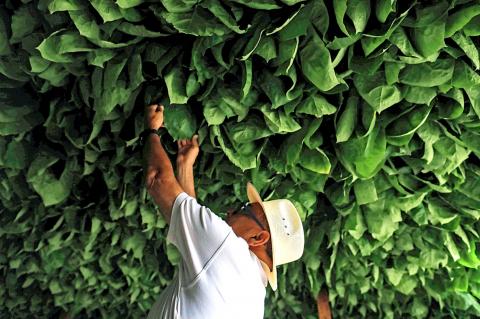
Photo: AFP
“No one has soil as good for tobacco as Nicaragua,” said Nestor Plasencia, whose family business is one of the nation’s leading cigar exporters, as he sits and savors the aroma of one of their creations.
Nutrient-rich volcanic soil and know-how imported from Cuba more than 50 years ago, as well as a knowledgeable workforce, have set Nicaragua apart when it comes to growing flavorful top-quality tobacco.
Apart from Esteli, the two other tobacco-growing regions are the Condega and Jalapa valleys in the north, each with their own distinct soils and minerals.
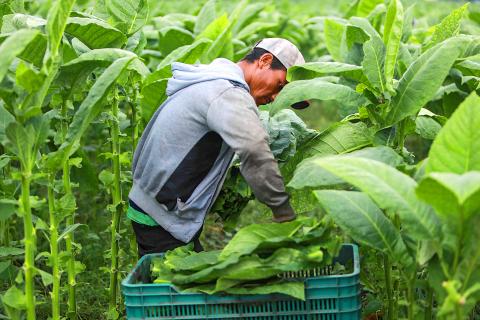
Photo: AFP
Part of the lure of Nicaraguan tobacco is that “the same seeds planted in different soils and climatic regions give different flavors,” Plasencia said, between puffs.
Cuban cigars might easily outsell the lesser-known Nicaraguan product in Europe, but Nicaraguan brands have taken advantage of the crippling US embargo on Havana — in place since 1961 — to sell to the Americans.
Nicaraguan cigar exports to the US have increased by 40 percent since 2008, reaching 140 million cigars last year, outstripping the Dominican Republic and Honduras, Cigar Association of America (CAA) data showed.
Nicaragua’s industry is a young one — it was started by Cuban exiles who fled Fidel Castro’s 1959 revolution. When Nicaragua’s civil war ended at the start of the 1990s, the industry started to flourish.
“My family started in tobacco in Cuba in 1865. Today we operate in Nicaragua and Honduras,” Plasencia said.
Today, the country has 70 factories producing more than 5,000 brands, Nicaraguan Chamber of Tobacco Producers director Wenceslao Castillo said.
Karina Rivera, a quality-control supervisor at Plasencia Cigars, tests an average of eight cigars a day.
“If I see that it’s not at the level of quality demanded by customers, we report immediately to find out where the problem is,” she said.
Smokers say a lot is going on in a cigar during puffs, tasting richness, balance and complexity — a variety of flavors and aromas that have helped several Nicaraguan brands conquer the US market.
Last year, US trade magazine Cigar Aficionado named seven Nicaraguan brands in the top 10 of its annual ranking.
As for the Best Cigar of the Year, the “E.P. Carrillo Encore Majestic” is made in the Dominican Republic, but with Nicaraguan tobacco, the magazine said.
“The strength of the Nicaraguan tobacco industry is our focus on quality, which is why we are today the largest exporter of premium cigars to the United States,” Castillo said.
It is clear that in the rarified world of premium cigars, names are important. To the aficionado, in clubs and the best bars, they trip off the tongue — La Opulencia Toro, La Imperiosa, Villiger La Vencedora Churchill.
“We believe that 60 to 70 percent of our success is due to the way tobacco is dried and the time spent on fermentation and aging — we don’t rush things,” Castillo said.
“The trilogy of this success is the soils, the microclimate and the people, the care they put into their work,” said Plasencia, who runs two factories in Nicaragua and exports 15 million cigars a year to the US.
The cigar industry has had to do more that resist climatic changes to survive. It is one of the few to emerge largely unscathed from the political and economic crisis that has rocked Nicaragua for more than a year.
“If it weren’t for these factories, Esteli would surely be deserted,” said 43-year-old Silvia Moreno, who has worked in the tobacco industry for half her life.

STEPPING UP: Diminished US polar science presence mean opportunities for the UK and other countries, although China or Russia might also fill that gap, a researcher said The UK’s flagship polar research vessel is to head to Antarctica next week to help advance dozens of climate change-linked science projects, as Western nations spearhead studies there while the US withdraws. The RRS Sir David Attenborough, a state-of-the-art ship named after the renowned British naturalist, would aid research on everything from “hunting underwater tsunamis” to tracking glacier melt and whale populations. Operated by the British Antarctic Survey (BAS), the country’s polar research institute, the 15,000-tonne icebreaker — boasting a helipad, and various laboratories and gadgetry — is pivotal to the UK’s efforts to assess climate change’s impact there. “The saying goes
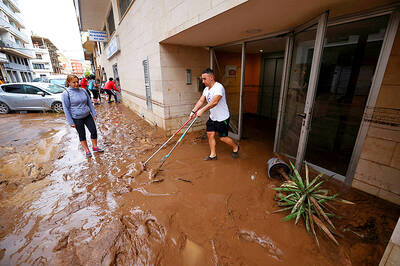
Floods on Sunday trapped people in vehicles and homes in Spain as torrential rain drenched the northeastern Catalonia region, a day after downpours unleashed travel chaos on the Mediterranean island of Ibiza. Local media shared videos of roaring torrents of brown water tearing through streets and submerging vehicles. National weather agency AEMET decreed the highest red alert in the province of Tarragona, warning of 180mm of rain in 12 hours in the Ebro River delta. Catalan fire service spokesman Oriol Corbella told reporters people had been caught by surprise, with people trapped “inside vehicles, in buildings, on ground floors.” Santa Barbara Mayor Josep Lluis
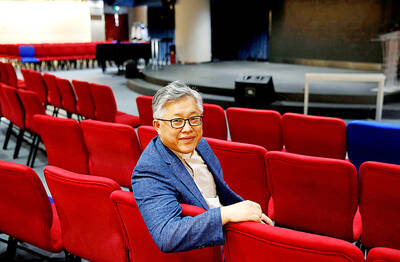
Police in China detained dozens of pastors of one of its largest underground churches over the weekend, a church spokesperson and relatives said, in the biggest crackdown on Christians since 2018. The detentions, which come amid renewed China-US tensions after Beijing dramatically expanded rare earth export controls last week, drew condemnation from US Secretary of State Marco Rubio, who on Sunday called for the immediate release of the pastors. Pastor Jin Mingri (金明日), founder of Zion Church, an unofficial “house church” not sanctioned by the Chinese government, was detained at his home in the southern city of Beihai on Friday evening, said
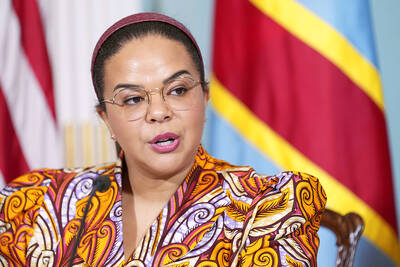
SANCTIONS: Congolese Minister of Foreign Affairs Therese Kayikwamba Wagner called on the EU to tighten sanctions against Rwanda during an event in Brussels The Democratic Republic of the Congo (DR Congo) has accused the EU of “an obvious double standard” for maintaining a minerals deal with Rwanda to supply Europe’s high-tech industries when it deployed a far-wider sanctions regime in response to the war in Ukraine. Congolese Minister of Foreign Affairs Therese Kayikwamba Wagner urged the EU to levy much stronger sanctions against Rwanda, which has fueled the conflict in the eastern DR Congo, describing the bloc’s response to breaches of the DR Congo’s territory as “very timid.” Referencing the EU’s response to Russia’s invasion of Ukraine, she said: “It is an obvious double standard